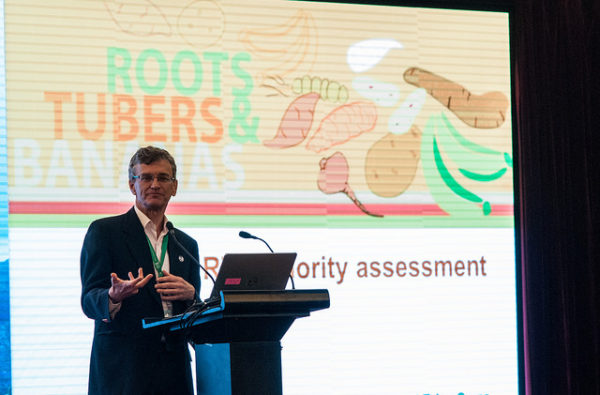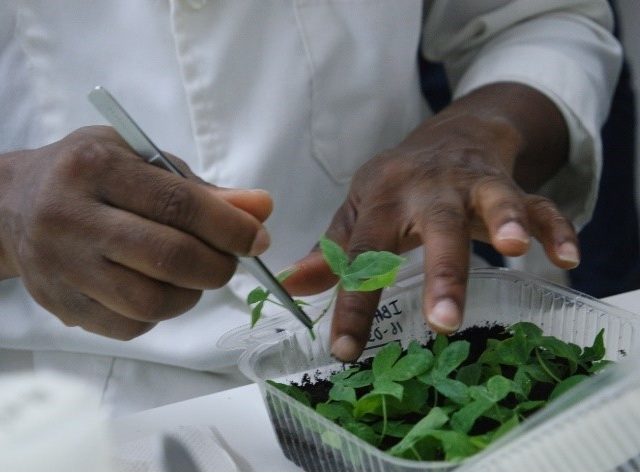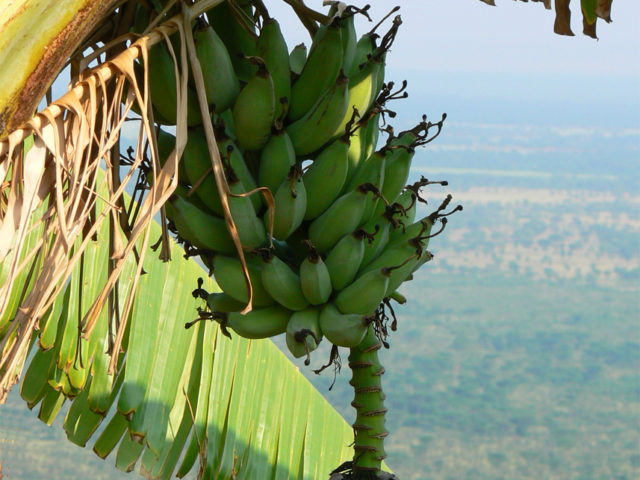Graham Thiele, Program Director, CGIAR Research Program on Roots, Tubers and Bananas (RTB) shares his top six highlights from the first World Congress on Root and Tuber Crops, January 18 – 22, Nanning, China.
With root and tuber crops providing food for than 2.2 billion million people around the globe, it is no surprise that our efforts to improve these crops are so broad and geographically dispersed. The first World Congress on Root and Tuber Crops, which has just wrapped up in Nanning, China, brought together hundreds of experts working on various areas in the value chain and is a special forum to share advances across all our crops.
This is one of the reasons why RTB is so pleased to support the International Society for Tropical Root Crops (ISTRC) and Global Cassava Partnership for the 21st Century (GCP21) as co-organizers. For me, it was also great to see so many friends and colleagues in the roots and tubers community and catch up on progress. There is so much to report back, but I do have a few highlights from the week which particularly struck me to share.
Omics and beyond
It’s astonishing the progress made with understanding the genetic makeup of root and tuber crops and the different pathways from genes to trait expression which the new science of ‘omics’ has made possible. It was impressive to see the progress made by our Chinese colleagues, including a lively presentation from Songbi Chen of the Tropical Crops Genetic Resources Institute of the Chinese Academy of Tropical Agricultural Sciences (CATAS) on the application of proteomics cassava breeding to understand how we could improve photosynthetic efficiency and starch accumulation in roots, thus potentially increasing their dry matter content.
Cassava as animal feed
I knew that cassava is a potential feed for livestock but I hadn’t understood that it actually has some special advantages. The presentation from Uthai Kanto, Associate Professor at Kasetsart University, and of the Thai Tapioca Development Institute (TTDI) explained how the fermentation and slight acidity of cassava chips inhibits mycotoxins when it used as a feed. Additionally the presence of low and non-toxic levels of cyanide even gives immunity to disease. These factors mean it’s a healthier alternative feed ingredient for livestock compared to maize, with improved weight gain for the animals although it does need a bit of enrichment with a protein source. This is an important finding for RTB supported work in utilization of cassava peel as animal feed.
Policy change promotes sweetpotato
Sweetpotato and other roots and tubers are often neglected crops. So it was very encouraging to learn from Jan Low of the International Potato Center (CIP) that because of advocacy and progress in research through the SASHA and SUSTAIN projects implemented by CIP, Rwanda has included in recent policy documents the promotion of biofortified foods, and in three districts (Muhanga, Gakeneke and Rulindo) local governments have included sweetpotato as a priority crop as part of their efforts to fight micronutrient malnutrition and improve the diversification of diets. For sure there are lessons here for other root, tuber and banana crops.
Cassava seed system in Uganda
Anthony Pariyo of the National Agricultural Research Organization (NARO) of Uganda explained there has been good progress made towards developing a sustainable seed system for cassava in Uganda, including a functional public-private partnership with BioCrops providing 12,000 plants from bioculture and a network of 47 seed entrepreneurs selling seed to farmers. There are some potential lessons here for a new RTB project on cassava seed systems which is getting underway in Nigeria.
Pruning buys time for cassava
Cassava roots deteriorate quickly after harvest, posing a significant challenge for farmers and processors. Harriet Muyinza of NARO took part in an exchange visit to the International Center for Tropical Agriculture (CIAT) in Colombia sponsored by the RTB-ENDURE project, during which she applied a cassava pruning technique that she learned during the exchange in field trials in Uganda. The results are very promising, showing that with one of the varieties called Tim Tim, pruning reduced post-harvest deterioration to below 20%, compared to 70% without pruning. This suggests that pruning could be effective for farmers to reduce storage loss and have more time to transport their crop to market.
Brown streak disease resistance
Morag Ferguson from the International Institute of Tropical Agriculture (IITA) reported the surprising finding that resistance to cassava brown streak disease, previously thought to have come from East Africa, was actually derived from a West African landrace. This, together with their location of molecular markers associated with the genetic inheritance of resistance should importantly enable preemptive breeding against brown streak disease in West Africa. This could be extremely important given that the disease is spreading west from its origin on the coast of Tanzania and potentially affecting the rest of the continent.

Graham Thiele, RTB Program Director, summarizes the findings of the program’s priority assessment during the Congress. Photo: G.Smith/CIAT
I also took the opportunity to present two plenary sessions – the first updating the progress in RTB and giving a closer look at our work on improving climate change resilience, and the second summarizing the findings of the RTB priority assessment. This assessment kicked off at the GCP21 in 2013 and so it was very appropriate to present a wrap up in China.





